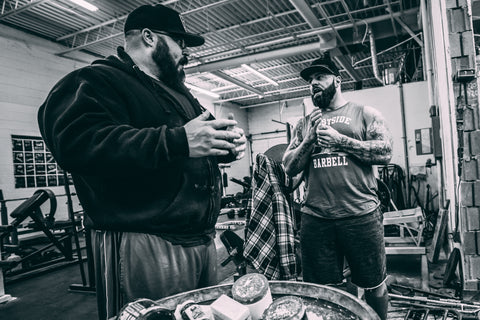Starting Conjugate: How to Begin Rotating Max Effort Exercises

If your goal is to make massive gains in absolute strength, then max effort training is your best friend. Last week we discussed the strategy employed when selecting your initial max effort lower and upper body exercises. We also briefly discussed exercise rotations; however, further explanation is necessary.
When it comes to max effort training, the two most important factors are the exercises you're selecting and how you rotate them. Selection matters because the movements must be relative to the sport an athlete is preparing for. Exercise rotation matters because it allows us to consistently get the most out of an exercise.
Does this mean football players should be running sprints carrying a weighted football? No. This means that the exercises selected for an athlete should be focused on developing, improving, and raising the strengths necessary to excel at the sport they compete in. As a powerlifter, becoming proficient at lifting heavy weights is the name of the game.
It only makes sense; if you wish to get stronger, you must regularly train at proper intensity levels to achieve optimal motor unit (MU) recruitment. This exposure is the key to absolute strength development. It is also why a Conjugate lifter will be strong year-round, while a lifter following a linear plan will typically need 8-12 weeks to reach 80-90% of their former capacity.
So, how do you continue to gain strength and avoid accommodation while mastering the motor patterns of the basic movements? Intelligent exercise rotation.
As a Conjugate beginner, the way you rotate your exercises is important because it will allow you to get the most out of three to five basic movements instead of constantly performing new exercises every week and never really mastering any of them.
Below, we will discuss rotating basic max effort exercises to get the most out of your training.
Exercise Rotation - Month A
Your max effort training will include four weeks of lower and upper workouts every month. This makes eight max effort workouts per month, but we will focus on the four lower body exercises for this article.
Keep in mind that the strategy remains the same no matter if we are planning lower or upper body training.
Here is how the first month's rotation would look:
Week 1: Competition Deadlift, work up to a max effort single
Week 2: Giant Cambered Bar Good Mornings, work up to a top set of 5
Week 3: Competition Squat, work up to a max effort single
Week 4: Front Squat, work up to a top set of 3
The scheduling of the exercises allows for a lifter to consistently be exposed to training intensities above 80% to improve absolute strength, with two of the weeks being all-out max effort singles.
This is a good balance for beginners, considering they may not have the fitness needed to recover from max effort single rep exercises every week.
Exercise Rotation - Month B
Now that your first month of max-effort training (Month A) is scheduled, it is time to change a few exercises and get the next month's workouts planned. We don't want to change every movement; developing competition squat and deadlift proficiency is essential, but we want to expose the athlete to new stimuli.
Here is how the second month's rotation would look:
Week 1: Competition Deadlift, work up to a top set of 3
Week 2: SSB Box Squat, work up to a top set single
Week 3: Competition Squat, work up to a top set of 5
Week 4: Deficit Deadlift, work up to a top set single
Month B is focused on continuing to develop absolute strength and proficiency in the competition lifts, this time with added reps.
This allows the athlete to experience the competition lifts for max effort singles in Month A, followed by experience performing the lifts for reps in Month B. Both months include all-out max effort work, and every workout is above 80% intensity.
This is how you expose a beginner to proper intensity, volume, and new exercises while avoiding accommodation and keeping the training enjoyable, so the athlete remains engaged.
As much as our linear periodization friends want to say all you have to do is squat, bench, and deadlift, we know this not only leads an athlete to boredom, we know it leads to accommodation and stagnation in the development of strengths and skills.
Your brain may want to make training as simplistic as possible. The truth is human beings are complex organisms, and the training must become complex as the needs of the athlete change.
Will basic exercises work at first? Of course. Will performing the same basic exercises over and over for months or years lead to stagnation and overuse injuries? Absolutely.
The rotations used above include adequate exposure to the competition lifts, with special exercises added in so we can continue building absolute strength and sports skills uninterrupted.
Going Forward
This article has covered two months' worth of max-effort lower training. You will follow an A-B-A-B pattern for the next few months to continue this schedule. I recommend using these exercises for four months, then adding in some new exercises, specialty bars, or changing up the rep schemes.
Remember that it is always wise to keep the competition lifts regularly scheduled. This does not mean you need to squat with a competition bar every month, but you should be squatting to competition depth using a competition or specialty bar every month.
In the future, I will cover specialty bars more in-depth, along with the strategy that goes into deciding when to use them. Be on the lookout for that.
Sources:
Simmons, L. (2007). Westside Barbell Book of Methods. Westside Barbell.
Verkhoshansky, Y., & Siff, M. C. (2009). Supertraining. Verkhoshansky.





